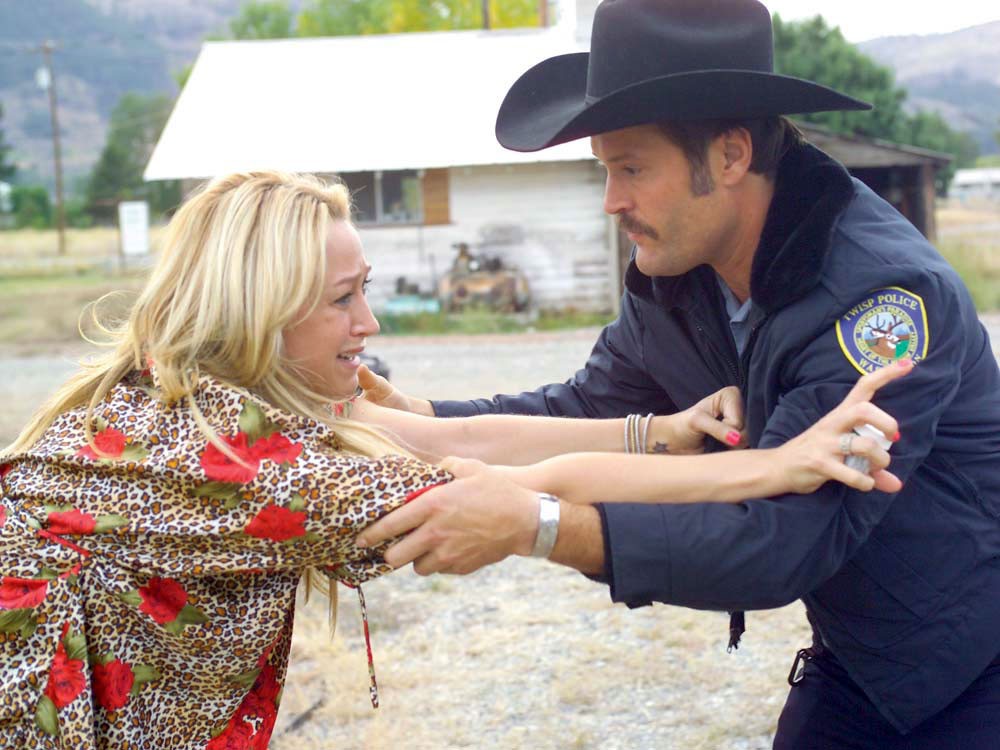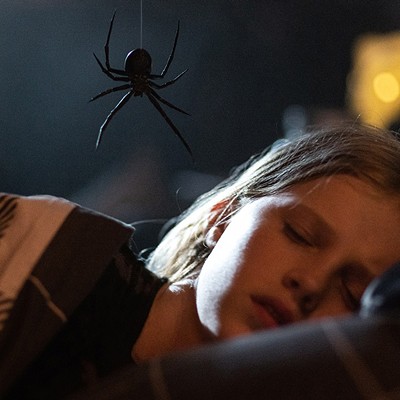It was just a couple of lines on the police blotter. Some guy had walked in to Three Fingered Jack’s Saloon in Winthrop, Wash., wearing a 10-gallon hat, a sheriff’s uniform and an impertinent handlebar mustache. He and another guy — about 6-foot-5, looked like a football player — sat down for some whiskey.
But the one in the hat definitely wasn’t a lawman.
The nearby town of Twisp has two patrol officers. Winthrop, the same. This guy wasn’t one of them.
The locals called authorities. The day before, residents in Twisp had witnessed a late-model Crown Vic — its light-bar lit up like Christmas — tearing ass down the road and skidding to a halt on someone’s front lawn. The fake cruiser had a magnetic sheriff’s star on the driver’s side door. The men and women attending to it would occasionally take the magnet off and affix it to the other door. At some point, an onlooker called the real cops.
These are the travails of filming with an ultra-low budget in the Methow Valley. When you gotta build your own police car (because the real cops backed out on letting you borrow theirs), the locals get suspicious and turn you in.
When you need to burn down a cabin, but there aren’t any Hollywood pyrotechnicians around, you ask a local sculptor to bring his torch over.
And when you need to kill people in gruesome, inventive ways but your production budget tops out at $60,000, you thank God that prop blood is cheap and plentiful. “We had to dazzle with b.s.,” says production manager Ginny Abdallah.
In order to make The Absent— a teen slasher and psychological horror mash-up, with a soupçon of split-personality disorder and statutory rape thrown in for spice — Wenatchee director Sage Bannick had to call in a lifetime of friends and favors. He recruited semi-pro talent from L.A., harangued buddies from film school at the University of Washington (that’s where he got the football player, former Tennessee Titans guard Benji Olson), pulled from the film and theater scene in Spokane, and borrowed liberally from his own bank account.
They shot the film in 10 days in fall of 2008. “It was totally run-and-gun,” says Bannick.
Spokane actor and playwright Damon Abdallah (Ginny’s husband) was the principal screenwriter, working from a story by Bannick. Damon says this was the first time he had ever written from someone else’s source material and estimates the script went through four serious revisions. “Sage would say, ‘This is cool, but we need a chainsaw going through someone’s chest here.’” And so it went. During the shoot, Ginny became “set-dresser and scenic designer,” she says, “Painting sets, using decorations from my house. Sleeping maybe an hour a night.”
She ended up with a producer credit after finding a source of last-minute funds.
Bannick says all film productions are the same in one specific sense. “They’re almost always 100 percent frustrating. You don’t know why you do it,” he says. “But then, when you’re done, you can’t wait for the next. It’s like a dysfunctional relationship. A codependency.”
The fruits of that quasi-abusive relationship will be on display this Wednesday at the Magic Lantern (with a discussion to follow), or any time if you have Comcast OnDemand. The Absent will get a U.S. and international DVD release on March 15.
The Lantern may be your only chance to see it in a theater, though, and we bet that chainsaw-exploded chest cavity really pops off a big screen.
The Absent • Wed., Jan. 12, at 9:30 pm • $7 • The Magic Lantern • 25 W. Main Ave. • http://www.theabsentmovie.com • 209-2383

















